Where to see Starling Murmurations Near York
There are few natural spectacles in the UK more impressive than a Starling murmuration. In recent years their popularity has grown as many more people are now interested in the natural world. Where once some people despised starlings for being messy and gregarious (just like humans) their amazing aerobatic displays are now out competing even the red arrows for media time.
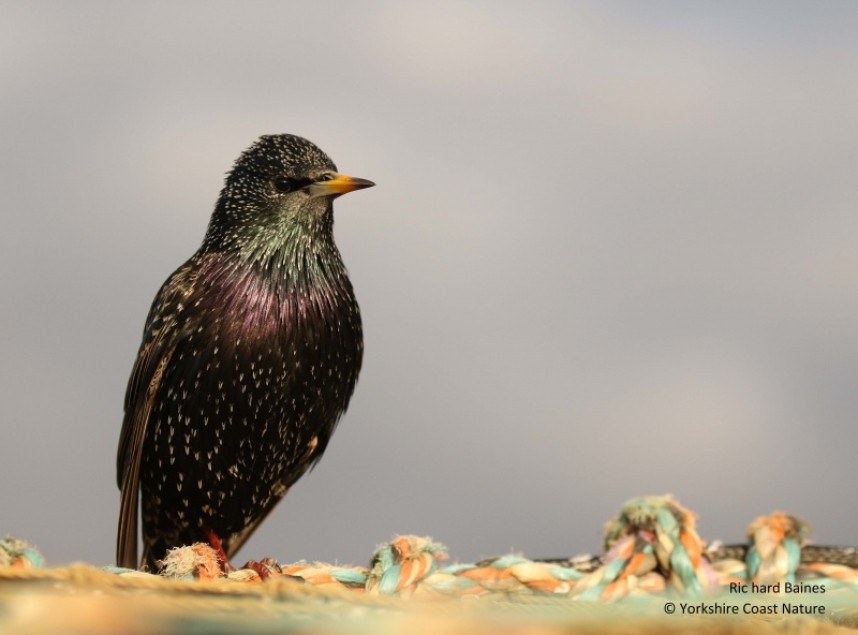
Common Starling © Richard Baines
In North and East Yorkshire, we are lucky to have several sites, which in recent years have hosted murmurations. Brough airfield held an impressive display of Starlings above the old Tornado runway in the winter of 2021 and Ripon Wetlands, Yorkshire Wildlife Trust (YWT) nature reserve was a great place to be in December 2022.
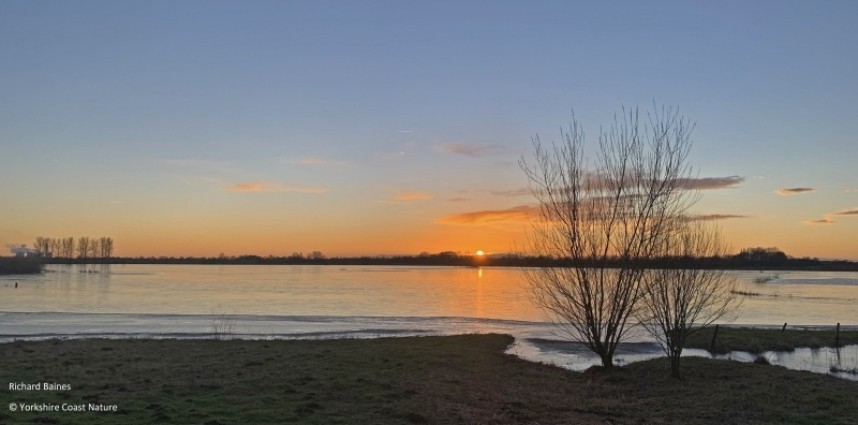
The Lower Derwent Valley National Nature Reserve winter sunset © Richard Baines
So far in 2023 closer to my home near York, the Lower Derwent Valley National Nature Reserve (LDV) has been the best place to be for murmurations in the eastern part of Yorkshire. At every site I have visited, Starlings have been attracted to tall vegetation either reeds or tall stands of young Willow trees, crucially growing above water. Roosting in tight groups in tall vegetation above water reduces the risk of predation.
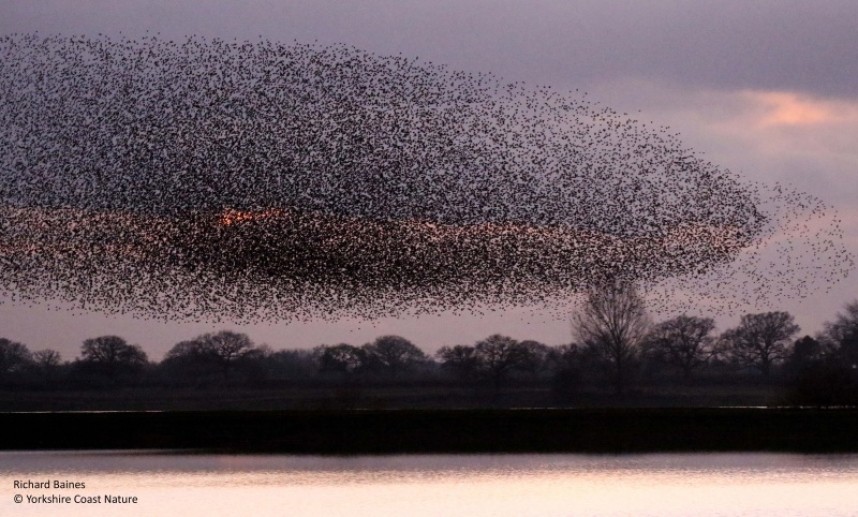
A massive movement across the wetland looking south from Aughton church in 2020 © Richard Baines
My first visit to watch Starlings over the LDV, a fantastic, large scale floodplain wetland was on the 12th January 2020. We stood at Aughton Church looking south over large areas of floodplain, Willow plantation and meadows. I remember being so impressed by the landscape which really made the spectacle much wilder and definitely improved my photo opportunities.

Starling flocks arriving © Richard Baines
There are two main sites to watch the LDV murmurations from. The first is The North Duffield Carrs Natural England nature reserve (part of the LDV). The car park is situated approximately half way between the two villages of North Duffield and Bubwith, on the northern side of the A163. Please be careful as the road is often busy and the car park is not easy to see as you drive along the road. The sign and entrance to the car park are only obvious when you are quite close.
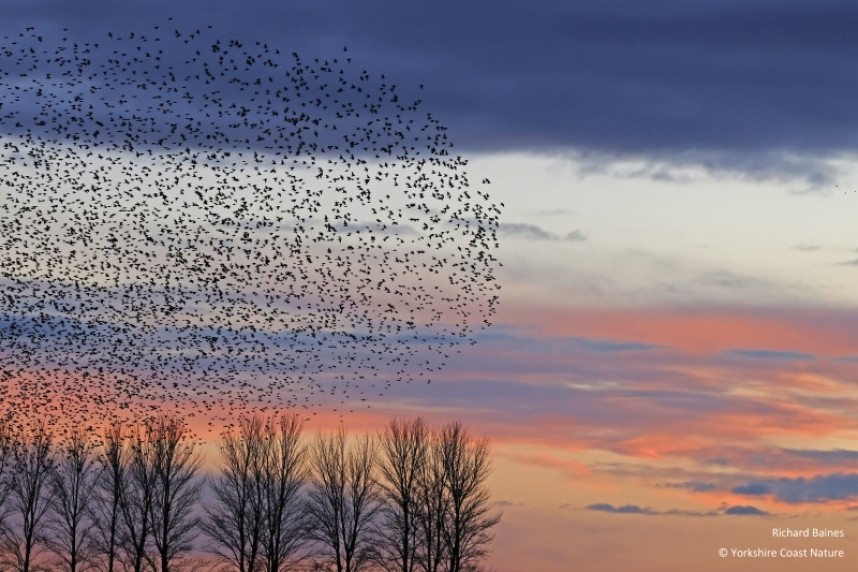
Over the Poplars moving east © Richard Baines
Looking north from the car park there are two options. You can either follow the path to your left which leads to two bird hides. The starlings usually use the tall trees beyond and to the west of the hides over the farmland to gather before roost, so views from the hides can be quite close. This first stage of the roost involves loose flocks of Starlings massing over mature trees. This is a chance for more flocks to arrive and the sound of chattering can be immense.

A river of birds over the wetland © Richard Baines
Alternatively follow the path from the right-hand side of the car park to a viewing platform overlooking the wetland. From here look north towards the Poplar tree line across the impressive wetland. The starlings usually cross this area when they move from west to east from the tall trees in the west across the river Derwent to the east. This second stage of the roost is usually when the first murmurations start and flocks can often form wavy shapes like a river of birds. From this viewing platform you can also see the southern part of the Willow plantation where the Starlings usually roost.
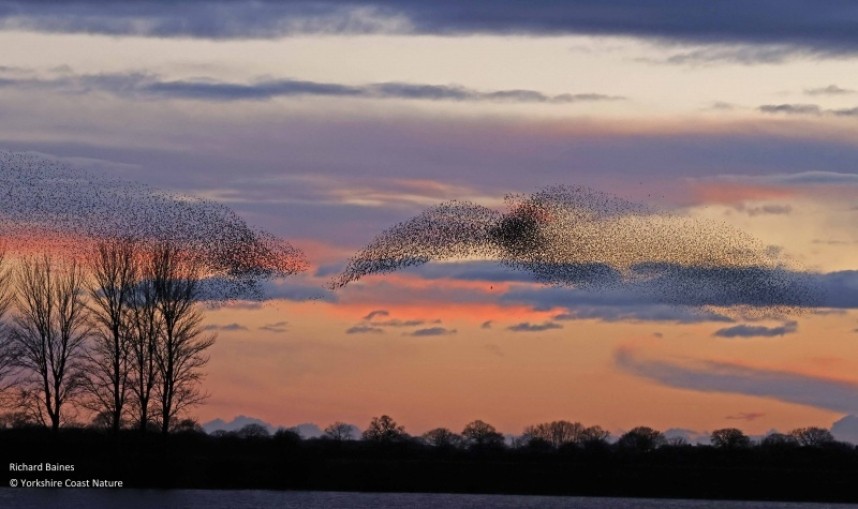
Wavy forms over the Poplar trees © Richard Baines
The second site to visit which looks south over this same area is Aughton Church yard. The Willow plantation looks quite close from the churchyard. However, this can be misleading as the plantation extends a long way south from where you watch from. Some nights you can get lucky and they roost in the northern area of Willows near the church, other nights they are further south and the murmuration can appear quite distant. However, there are a few advantages of being in the church yard. The view to the west and south west is fantastic for winter sunsets and you can get lucky with a hat trick of Starling murmuration, a beautiful sky and a view over the impressive wetland. This site is also a very peaceful location so if you are lucky and the Starlings roost in the northern Willows near the church then the sound of the wings is total. Please always remember to respect the church yard and privacy of nearby residents.

Tightening up before roost © Richard Baines

The Blue Tit form © Richard Baines
On the 18th January at 4.32pm I got lucky and took this photo from Aughton church. This was the last part of the murmuration as they bunched up really tight over the Willows. The flock was quite distant but a good distance for a landscape photo. At first, I only saw an arrow in my photo but then someone said it looks like a Blue Tit and immediately I could see it! At 4.35pm they dropped into the Willows and they were gone.
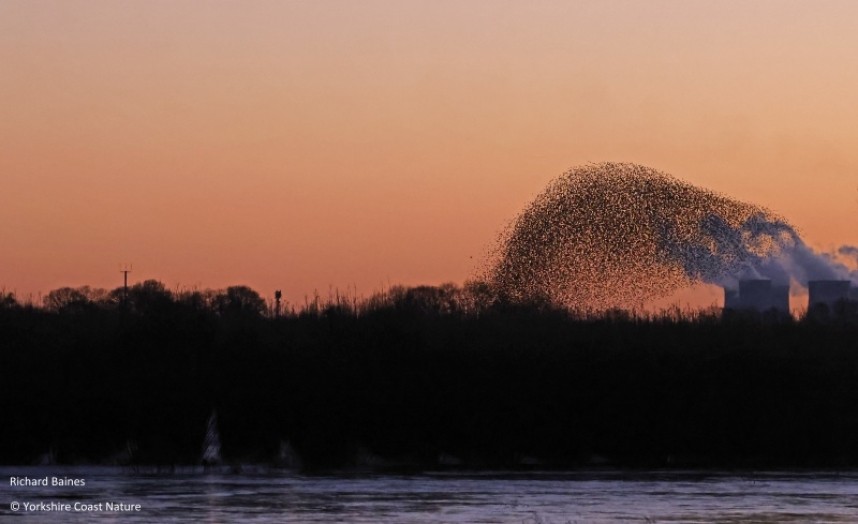
Dropping into the Willows to roost © Richard Baines
With several choices on the table my best advice is to visit both LDV sites and try all three watch points on different nights. Over the past five years there has been a noticeable difference in peak numbers for each location in North and East Yorkshire. Brough Airfield in November, Ripon Wetlands YWT in December and the LDV in January and February. I am already planning several trips to all three places next winter!

Whooper Swans at sunset over the Lower Derwent Valley © Richard Baines
If you would like to join one of our Yorkshire Coast Nature trips and maximise your chance of being in the right place at the right time for the Starling murmuration and see much more wildlife throughout the day then look out for our Winter Wetland Birding Days next winter. To sign up for our newsletter at the base of our home page CLICK HERE.
Richard Baines
Yorkshire Coast Nature



 Back to Blog
Back to Blog
